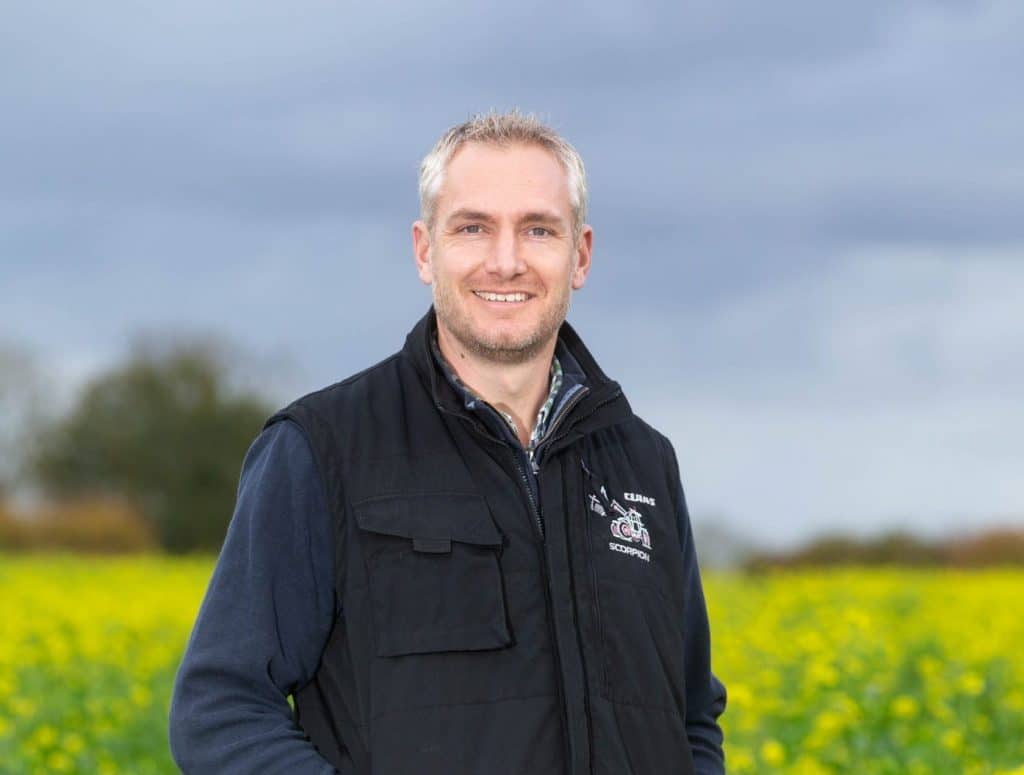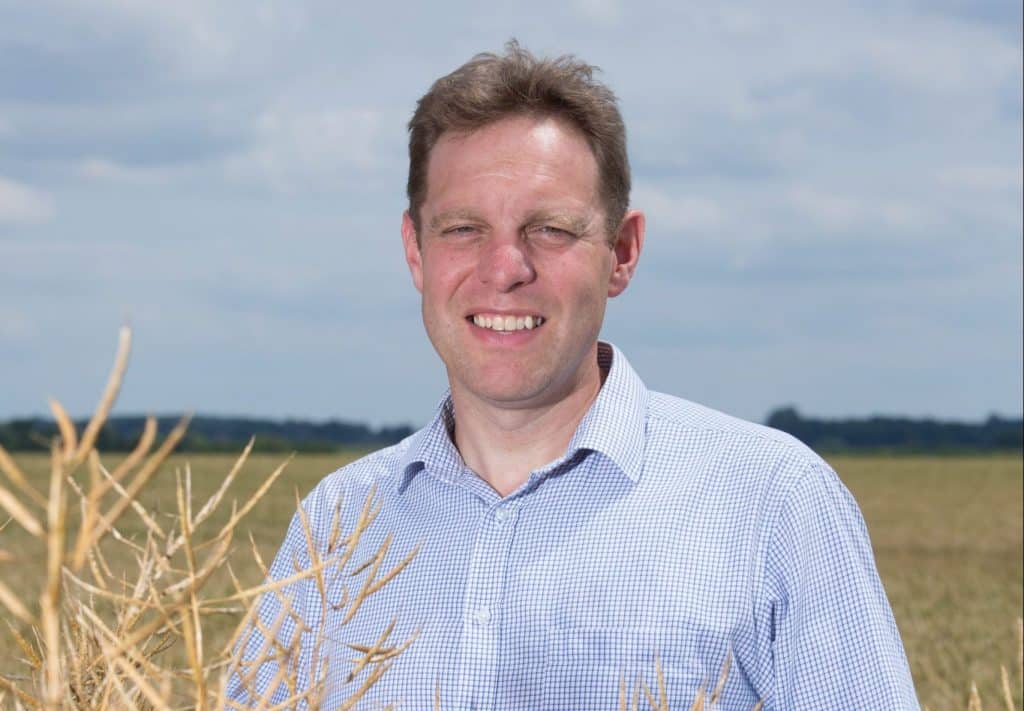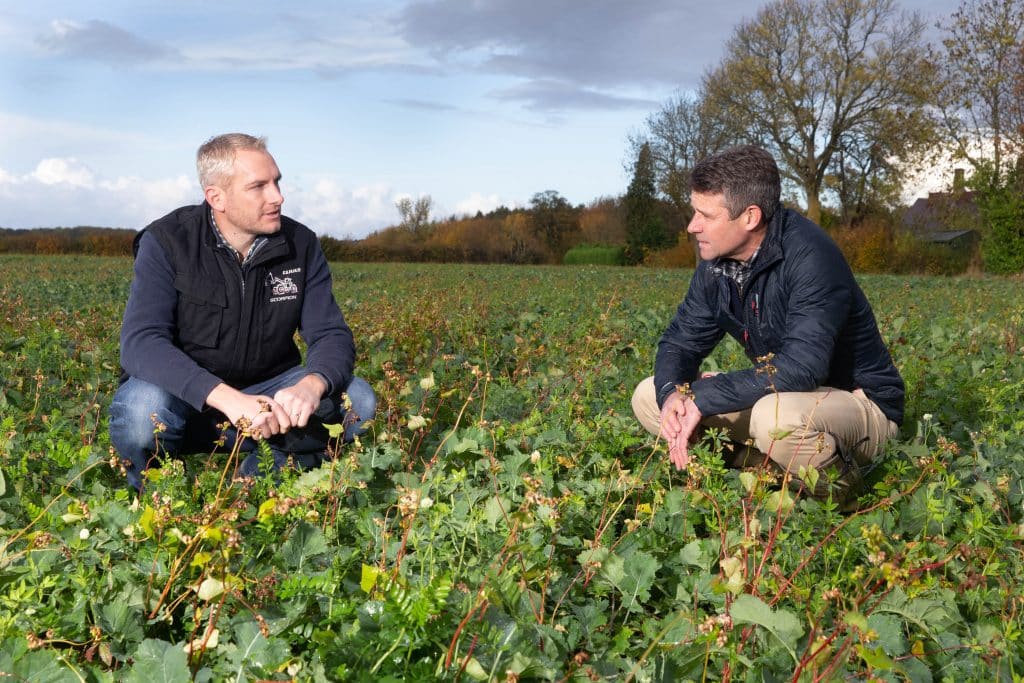‘Improve or remove’ a viable route to a regenerative farming future – Arable Farming – Bob Bulmer, Rob Jewers
The opportunity to conduct validated, on-farm R&D on a home farm is one many farm businesses aspires to ...
And one that Suffolk farmer Tom Jewers has grasped with alacrity, as host of Hutchinsons’ Helix Technology Farm East.
Now in his second season with Hutchinsons at G.D. Jewers and Son, Wood Hall Farm, Rattlesden, Mid Suffolk, Tom Jewers says he believes the Helix Farm project will help him work with, rather than against, nature to achieve a more ‘agroecological’ farming system.
However, he adds the project, which is based on an ‘improve or remove’ approach to raising farm productivity and profitability, is posing as many questions as it is delivering answers.
A socially distanced farm walk on a cold but sunny April day provided an opportunity to catch up with some of the work underway this season.

Tom Jewers, Helix East host – G.D. Jewers and Son
Making better use of nitrogen
Nitrogen response work at Helix Farm East is assessing the effects of a range of four N rates between zero and 240kg N per hectare, applied as AN, UAN and UAN plus urease and nitrification inhibitors. This work will consider economic and environmental aspects of nitrogen use.
Hutchinsons trials and technical manager Dr Bob Bulmer says: “If we can use N more efficiently and maintain productivity, it saves cost. We are looking at ways of bridging the loss of income from BPS and fertiliser is about 30% of farm input costs and N probably about 70% of that. So, we’ve got an input that is very cost-effective but by using less there is an opportunity to reduce the farm’s carbon footprint and improve the economics.”
From a farm business perspective, nitrogen provides the best return on investment of crop inputs, says Tom Jewers.

Dr Bob Bulmer, Trials and Technical Manager
“So we are always a bit hesitant to reduce rates as we know nitrogen will build yield.” But equally there are occasions when N rates are reduced because areas of a field may look poor, but end up combining as well as the rest of the field, he adds.
“And you think, we used 60kg N/ha less on there, so we’ve wasted it elsewhere. But would it have been the same result in another season? These are the questions we need to answer.”
Technology support tools including tissue testing, N-Tester, chlorophyll meter measurements, grain nutrient analysis and NVDI image analysis are also being used to determine whether they can support decisions on more efficient nutrient use.
The Helix East team hopes the work will also help inform the debate around nitrification inhibitors’ positive impact on GHG emissions but detrimental impact on soil microflora. Dr Bulmer says: “Inhibitors are good at reducing nitrous oxide GHG emissions, but we have a debate about what they are doing to soil life as they inhibit the activity of some bacteria in the nitrogen cycle, which convert ammonium into nitrate.
“So, we’ve got a conflict between healthy soils and putting on a nitrification inhibitor. One of the things we are doing here is reviewing a new in-field soil biology test to find out what is happening to soil life in these plots. We can certainly see some opportunities with inhibitors but also potentially a bit of a dilemma in terms of a healthy soils approach.”
Inhibitor
Tom Jewers adds: “A nitrification inhibitor allows you to put on a lot of nitrogen in one go and not lose it, but is this then killing everything in the soil and encouraging more disease? These things have to be weighed up.”
A baseline assessment of the soil health status of the field has been obtained using the Eurofins Soil Life Monitor soil test. This recently launched test provides a detailed insight into a soil’s chemical, physical and biological properties. Soil Life tests were done at the beginning of the season and will be repeated later in the season, once nitrogen applications are complete, says Hutchinsons fertiliser and crop nutrition specialist Rob Jewers.
The farm’s soils have also been mapped using Hutchinsons’ TerraMap soil mapping service and components of yield, including plants/sq.m; tillers/sq.m; ears/ sq.m; grains/ear; thousand grain weight plus grain nutrient analysis will be measured.
Dr Bulmer adds: “Last season the soil test was predicting low nitrogen availability and the grain analysis also picked this up. This is something Tom is concerned about in the context of the dry spring/early summers we have been having.”
Focus on phosphate
Nitrogen is not the only nutrient under the spotlight at Helix Farm East. Last season, of 167 grain nutrient sample tests done nationally by Hutchinsons, 46% retuned results of either marginal or deficient P levels, says Dr Bulmer.
The most common soil test for phosphate is available phosphate, but of this chemically available P only one or two kilos may be available out of hundreds of kilos in the soil and most is chemically locked up through interactions with calcium, iron and aluminium, which means crops are unable to access it, says Rob Jewers.
In addition, triple super phosphate (TSP) has just 10% use efficiency, compared with nitrogen’s 60%. Tom Jewers believes phosphate deficiency problems are an availability issue rather than a failure to supply sufficient P.

Rob Jewers, fertiliser and crop nutrition specialist
“Our phosphate levels here have been holding up fairly well, but we’ve got high levels of calcium and whether that locks it up I don’t know. It’s called available P but it’s not necessarily plant-available P.
“I was discussing with my father whether we should have a P and K holiday and we realised that not once have we looked at a margin over input costs with a TSP or MOP application. As farmers we’ve got to do that. It’s only 10% efficient and I’m increasingly convinced that is more to do with how we get our soil in order to access what’s in the soil than it is using it to maintain indices. You are eventually going to run it down I’m sure but probably we don’t need to put on anything like the amount we do, we just need to get our soil into a state where we can access it better.”

Tom with his agronomist Mike Greener
The phosphate work at Helix East will look at the interaction between soil biology and P availability and is being conducted on spring barley. The effects of four novel treatments intended to either supplement phosphate or improve the availability of phosphate to the crop-Crystal Green (continuous release, root-activated P fertiliser), Biolite (fertiliser recycled from power station and water industries by-products), Primary P (starter fertiliser) and a bacillus amyloliquefaciens bacterial consortium PC25 (soil-colonising bacteria said to help plants mine phosphate) are being compared with TSP in terms of effects on components of yield and economic performance.
Dr Bulmer says: “Can we use soil life to mobilise more P? There are associations between fungi and roots that help plants take up nutrients. We do know that adding P fertiliser can switch off that interaction.”
Tom Jewers adds: “And is 300kg per hectare of DAP negatively impacting the soil bacteria you need? We’ve done four treatments on spring barley with placing phosphate and for me the most interesting one is placing phosphate-solubilising bacteria with the seed. To me that seems a much better solution because it seems to be working more with nature than against it, which is something I really want to do.”
This season the bacillus amyloliquefaciens, which is supplied in powder form, has been applied down the drill slot, with the spring barley seed, using Biolite granules as a carrier.
Bacteria
“Last year we sprayed the bacteria on top after drilling, in bone dry conditions and didn’t have any rain for four weeks, so it was possibly a waste of time and it probably needed to go in the [drill] slot.
“This year we’ve managed to get it down the drill slot, where it should be. The powder goes on at 500g/ha and was difficult to get on in that form. We’ve used 3kg/ha Biolite granules as a carrier so we could get an even distribution,” says Tom Jewers.
Combining digital farming and biology
Hutchinsons’ Omnia digital farming platform, along with its TerraMap soil mapping service, underpins the work being undertaken at the Helix Farm East and other Helix Farm sites, providing a way of recording, retrieving and analysing information.
Dr Bulmer says: “There is quite a focus on these sites looking at contrasting soil zones. Our aspiration as agronomists is to pick up problems as they are developing.”
A field headland at Wood Hall Farm provides a perfect example of this approach in action. Tom Jewers says: “Over the last two or three years it hasn’t been performing well but we thought we won’t put it into a scheme because it has been hammered down with a bit of traffic.
“It’s had two wet autumns with the drill turning on it, which hasn’t improved it at all, but there are certain areas where we’ve said we’ll take this piece out and put it into an environmental scheme and there are other areas where we’ve thought that is bad because of this and we think we can cure it.
Performance map
The beauty of Omnia is we can put in all our yield maps and combine them into one performance map and it shows you that actually this part of the field isn’t consistently bad, it’s just been bad this year, so let’s rectify the issues.
“But another area is always bad, and we could earn £640 per hectare by putting it into a wild bird food mix, so let’s do that. It means that decision can happen so much earlier. “You can even work out what net margin you think you are going to make out of an environmental option, put that in and it will tell you which bits are making you consistently more by cropping and which bits aren’t and then it makes the decision easy.”
About Helix East
- 385 hectares, 260ha owned, 125ha contract farmed
- Family partnership
- Cropping: Winter wheat, winter barley, spring barley, OSR, linseed, winter beans
- Countryside Stewardship Mid Tier scheme
- Wheat variety blends
- Cover cropping
- Tramline trials with Tiros treatment (endophyte seed treatment said to enable crops to fix N, sequester P, K and Zn, and better withstand drought)
- Hybrid wheat
- Crop: Winter wheat
- Variety: Gleam
- Drilling date: October 23-24
- Soil type: Hanslope Series
- N rates: 0-240kg/ha N